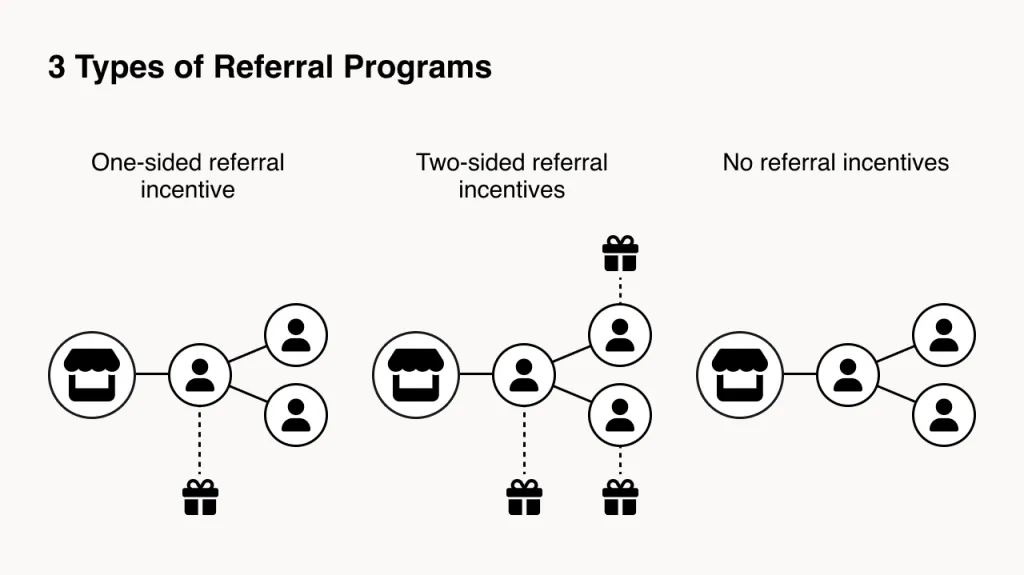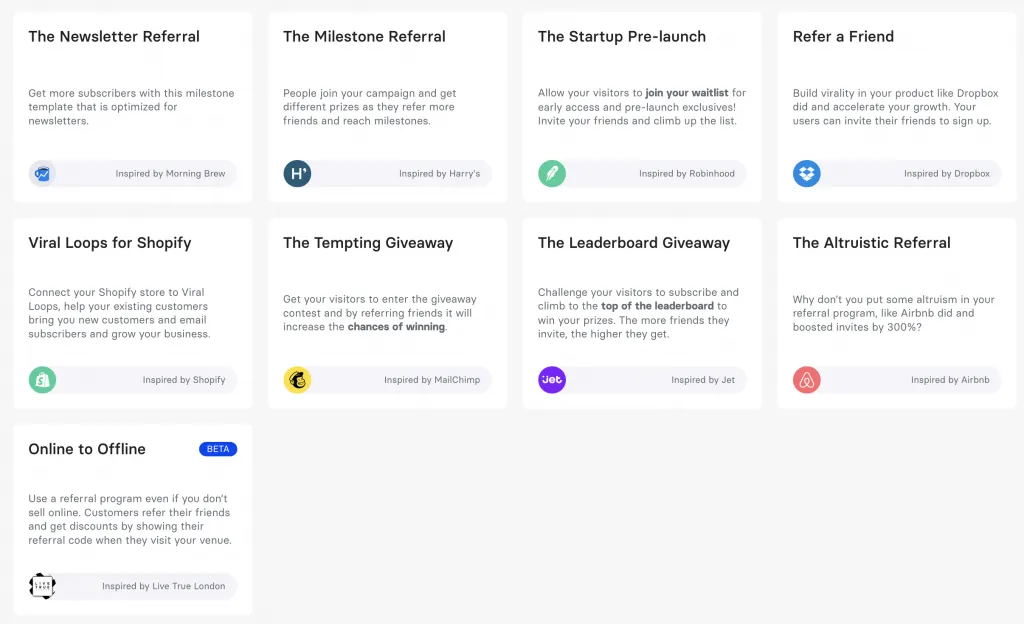They say to err is human.
No big deal if your error is missing a typo when editing your business cards and having to reprint them. ☎️
Or ordering 20 boxes of paper when you meant to order 2.
But when running an e-commerce store, a startup or any small business, some errors can have serious financial ramifications.
One common marketing technique prone to errors is referral marketing—with the consequences ranging from no referrals (most common) to thousands of dollars lost in pre-purchased rewards.
But if you’re looking to secure some profitable referral buzz, do yourself a favour and take a look at the most common referral marketing mistakes we see and how you can successfully avoid potential pitfalls that could cost you both money, time and loss of potential sales — neither of which you likely have to spare.

To develop a successful referral program, you must tempt customers with rewards attractive enough to entice them to take the time to log on to social media and refer potential clients to your business.
And without spending a fortune—unlike paid advertising that depends on your marketing spend, referral marketing can grow independently of how much you put in.
One of the biggest referral marketing mistakes we see is companies (from big businesses to fledgling e-commerce sites) trying to save a buck as they attempt to entice customers with lacklustre incentives.
Let’s face it. You won’t gain many new prospects by offering customers a logoed stress ball or a free promotional pen.
We've seen this mistake happen, especially with SaaS businesses incentivising people to bring other companies on board in exchange for a branded shirt. Who would proudly wear a shirt with a corporate logo on it?
How much excitement do you think these bland offerings will elicit? A ton within the team—none among the customers.
Do this instead: Find a balance between what customers want and what would give them more value in your product.
Tip: If you're not a venture-backed Fintech, refrain from offering cash as a reward since it completely shifts the motivation behind referring a friend.
According to a talk we had with one of the UK's leading growth agencies, WeScaleStartups: deciding what incentives to offer can be derived from two principles identified:
At the bottom of the incentive pyramid, you can place the most fundamental things someone would value and the “Nice-to-have” at the top. From there, you can experiment again and iterates over the rewards to find what makes people tick.
Moreover, generating the list of incentives boils down to engaging with customers. Although you could spend endless time speculating about it, connecting with your audience over the phone and posing a question like "If you could refer a friend and receive something magical, what would it be?" can be highly beneficial.
Gilt did this masterfully, developing a comprehensive insider program to encourage referrals.
To appeal to its broad customer base, Gilt didn’t just go with one incentive but established a tiered system of rewards, including everything from free merchandise to insider access to their best flash sales.
To learn more about this, check out this guide on choosing referral rewards.
You have only seconds to get the details of your referral program across to your visitors.
The average webpage visit lasts less than a minute.
Readers spend between 15 and 20 seconds per individual email.
You don’t have much time to share the details of your program, between 15 seconds and a minute. Take much longer, and you can almost guarantee a New Yorker-style “fuggetaboutit” from customers.
The longer your explanation, the less likely your customers will understand and participate in your campaign. In addition, developing a program that’s too complex can also make it look like you’ve got to hide.
Fine print for days leads customers to wonder...am I being played?
And you’re certainly not going to get a customer referral from someone suspicious of your intentions.
Do this instead: Keep. It. Simple.
Robinhood kept it simple – and won big-time – as they prepared to launch in 2017.
✅ Their pitch was straightforward and uncomplicated – $0 commission stock trading.
✅ Their process was streamlined – sign up with your email address.
✅ Their intentions were direct – customers only had one option – opt-in.
✅ Their follow-up email was automatic — ensuring customers felt the love. ????
By making it easy for customers to sign up and share their referrals, Robinhood got what it wanted – a bank of potential clients ready and eager to use their product upon launch.
Another example is our referral program—on a single page; you can see your referral link, the rewards and an explanation of the only 3 steps needed to make a successful referral.

Your referral marketing strategy is not something that you can set and forget. ⏰
If you want your program to translate to sales, you need to review, revisit and revamp (if necessary) regularly.
Failing to review your program is one of the biggest mistakes we see. It could mean you’re tossing money out the window, continuing to fund a referral program that’s not doing much to bring people your way.
Which means you’re burning cash.
Do this instead: Before launching your program, develop a follow-up plan to assess its effectiveness.
One company that got that right is Airbnb.
They established six specific metrics to track the ongoing health of their program.
By setting success measures from the start, Airbnb kept all stakeholders in the loop and ensured everyone was rowing in the same direction.
Pro Tip - Conducting ongoing assessments is decidedly more accessible if you use robust referral marketing software to systematically track the health of your program and deliver up-to-date data to you when you need it.
You want sales…
And you want them now.
So when you see that a program you launched two weeks ago isn’t bringing in the millions you hoped for, you feel compelled to throw in the towel.
The unfortunate truth of the matter is that results take time.
It doesn’t matter what marketing strategy you’re implementing. Whether trying email marketing or starting a simple campaign to increase click-through rates, marketing programs need time to bake. So be consistent and tweak your program...but don’t give up.
Do this instead: To avoid falling victim to this common mistake, you must undergo a complete paradigm shift. Don’t think of your referral marketing efforts as a quick fix that will patch up the holes in your company. Instead, think of it as an ongoing system that will continually feed your company a healthy diet of new customers.
That’s what MailChimp did, entirely investing in this marketing method and continually reinventing their referral program — with snazzy new incentives.
In the 17 years since MailChimp launched, referral marketing has made a major difference.
If MailChimp had given up the first time someone wasn’t as enthusiastic about winning a cat hat as they had hoped, none of this would have happened.
With time and effort, though, referral marketing can produce the growth you seek.
It happened for MailChimp.
It can happen to you.
Let's go ahead and recap. If you want your referral marketing campaign to live up to its true potential, you MUST NOT:
The devil's in the details. As long as you pay attention to avoid the mistakes above, you're- more or less, good to go!
For the rest (meaning building and running your referral marketing campaign), you have our assistance and templates:
